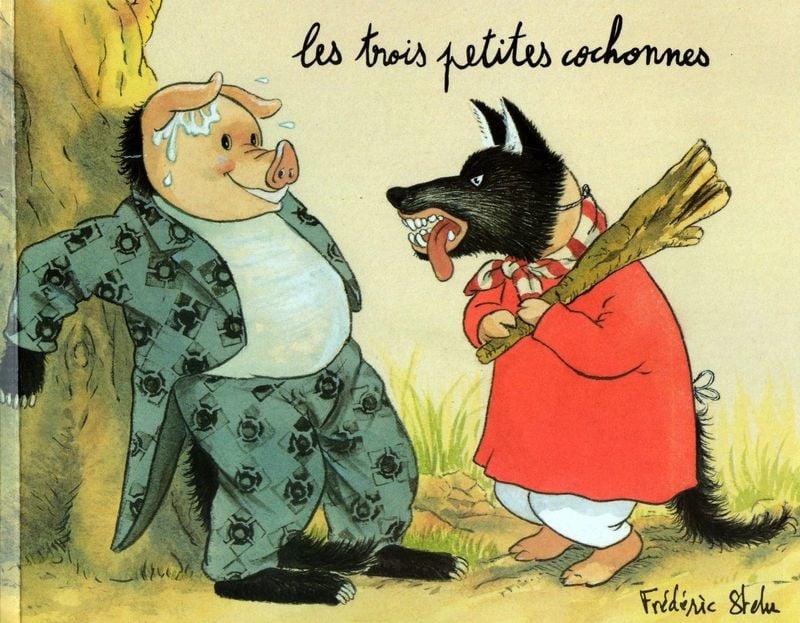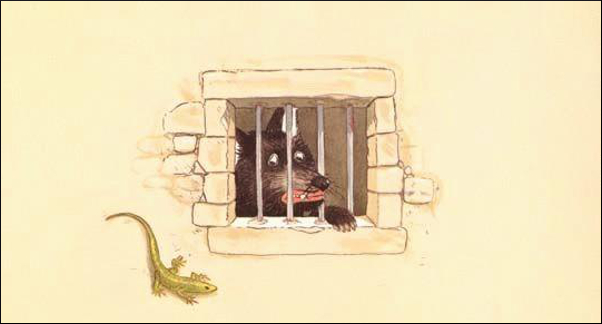
- Les trois petits cochonnes
- Published by: L'Ecole des loisirs
- Level: Beginner
- First Published in: 1999
A retelling of the classic fairytale of the Three Little Pigs. In this case, the “cochonnes” are female pigs instead of male.

Les trois petits cochonnes by Frédéric Stehr is a retelling of the classic fairytale of the Three Little Pigs. The original story is about three male pigs who must use their wits against a hungry wolf who is trying to blow their houses down in order to catch and eat them. Yet there is one change in Stehr’s version: the “cochonnes” are female pigs instead of male.
The story introduces the three protagonists by emphasizing that “ells ne sont pas sales,” that is, they are clean and feminine pigs, unlike the original characters. They receive money and sage advice from their mother in order to find the best possible husbands. That this is the only advice they hear could be considered traditional or outdated, since women these days are thought to be strong, self-reliant, and able to fend off for themselves. The first pig spends all her money on a fancy house and, once settled in it, is accosted by a potential suitor. He is clearly the wolf from the original tale, but this time with a pig’s mask to disguise himself as an ideal husband. He woos her and promises to turn this “cochonne” into a “baronne” (baroness). The posh female pig thinks, “Il est poli et il est riche” (He’s polite and rich). He meets her demands, she lets him in, and he promptly gobbles her up.
"Repetitive rhyming style is very common, both in fairy tales and in children’s stories."
The story then transitions to the second pig, the sensible one, who uses half her money to buy a sturdy but less fancy house. Again, settled in her new home, she receives a visit from the same wolf in disguise. He woos her too, but this time appeals to the second pig’s balanced nature, declaring he wants this “cochonne” to be his “compagnonne” (partner). This repetitive rhyming style is very common, both in fairy tales and in children’s stories.

After eating two pigs, the wolf is full and he decides to take a “sieste digestive,” a nap to help him digest. While he lies under “l’ombre d’un saule” (the shadows of a willow tree), the last pig lady comes through the field, disguised as a wolf, and startles the real wolf. “I’m not a pig,” he exclaims. “I’m a wolf!” The last pig, still in disguise, takes him to her straw shack and informs him that there is still one pig left inside. After he runs in, she captures the wolf, gets rid of him, and is finally able to live in peace. The story ends on an ambiguous note: “Les prétendants au marriage furent nombreux, mais on ne sait toujours pas si la troisième cochonne trouva le meilleur mari possible” (The potential suitors were numerous, but we will never know if the last pig found the best husband possible). The use of “furent” and “trouva” are in the past anterior tense, quite typical for old texts and fairytales, adding a note of morality. The story concludes with a potentially feminist lesson, as we see the female pig quite confident in her abilities, staring at all the potential husbands lined up at her door.
